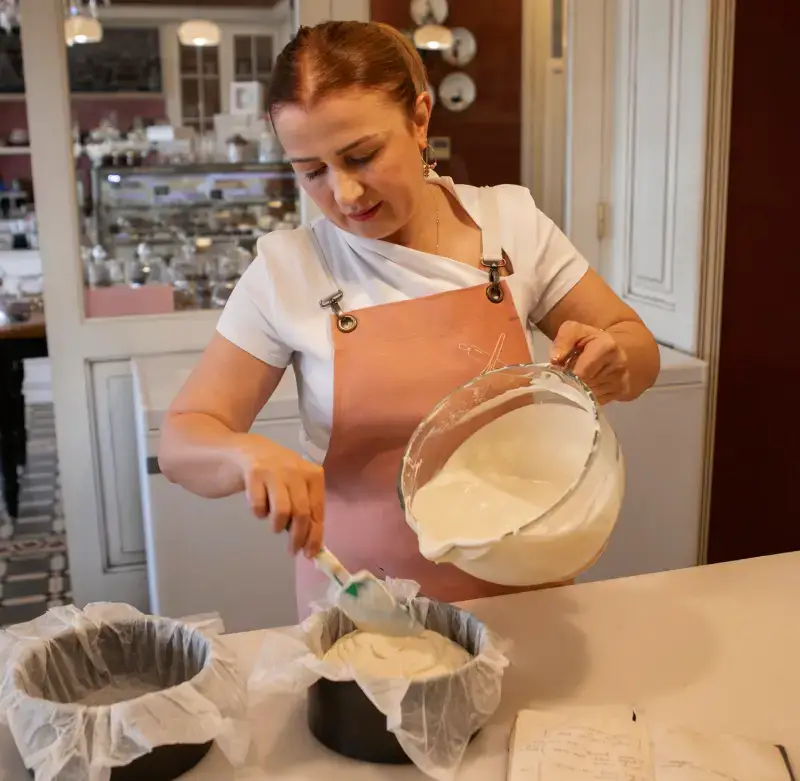A cake without a good filling is like a gift without a surprise inside. The filling brings balance, richness, and personality to your cake—whether it’s a light fruit filling or a decadent chocolate ganache.
If you’ve ever wondered how professional pastry chefs achieve such consistent, delicious results, you’re in the right place.
In this guide, we’ll explore the techniques and secrets that experts use to create flawless cake fillings every time.
You’ll learn about flavor pairing, texture, consistency, and even tips on storage and timing to make your cakes not only taste amazing but also look professionally assembled.
The Role of the Cake Filling
Before we dive into methods and recipes, it’s important to understand the role the filling plays in the structure and flavor of your cake. A well-executed filling:
-
Adds moisture to each layer
-
Enhances or balances the sweetness
-
Provides contrast in texture
-
Complements the flavor of the cake base
-
Helps stabilize the cake (when done correctly)
Now let’s break down the key components and expert strategies for creating the perfect filling.
1. Choose the Right Type of Filling
There’s no one-size-fits-all filling. The best type depends on the style of cake and the event you’re baking for. Some of the most commonly used types include:
-
Buttercream (classic, rich, and versatile)
-
Ganache (ideal for chocolate lovers)
-
Whipped cream (light, airy, and refreshing)
-
Fruit preserves or curds (bright and tart)
-
Cream cheese frosting (for red velvet or carrot cake)
-
Pastry cream or custard (for decadent, creamy texture)
-
Mousse (delicate and luxurious)
Each type of filling has different properties, which is why understanding the nature of your cake is crucial.
For example, a dense chocolate cake can handle a heavier filling like peanut butter ganache, while a chiffon cake is better suited to something light like whipped cream with fruit.
2. Flavor Pairing Is Everything
Great fillings don’t just taste good on their own—they work in harmony with the cake and topping.
Here are a few classic pairings:
-
Chocolate cake + raspberry filling
-
Lemon cake + blueberry compote + cream cheese
-
Vanilla cake + strawberry preserve + whipped cream
-
Red velvet cake + traditional cream cheese filling
-
Coconut cake + lime curd or pineapple mousse
To make unique combinations, consider:
-
Contrast (sweet + tart, rich + fresh)
-
Complement (chocolate + hazelnut, vanilla + berries)
-
Surprise (espresso + orange, caramel + sea salt)
3. Get the Consistency Right
The perfect filling needs to be firm enough to hold its shape, but not so stiff that it feels heavy or dry.
Pastry chefs often use these tricks to control consistency:
-
Add cornstarch or gelatin to custards and fruit-based fillings
-
Beat in powdered sugar for firmer buttercream
-
Chill whipped creams before spreading to help them set
-
Use ganache ratios properly (more cream = softer, more chocolate = firmer)
Always test a small amount before assembling the cake. If the filling is too runny, it may cause the cake layers to slide. If it’s too thick, it might not spread easily or could tear the sponge.
4. Layering Techniques for Even Distribution
Professional cakes look neat because the filling is applied evenly between layers. Here’s how to do it:
-
Use a piping bag to create a border or “dam” of thick frosting around the edge of the cake layer.
-
Fill the center with your main filling (e.g., jam, mousse, curd).
-
Spread evenly using an offset spatula, ensuring the layer is level.
-
Repeat the process for each layer.
Using a dam prevents soft fillings from leaking out, especially when you’re frosting the exterior of the cake.
5. Don’t Rush the Chill Time
A big mistake in home baking is stacking or frosting too soon. Chefs always chill the cake between layers. Here’s why:
-
Helps fillings firm up and hold their shape
-
Reduces sliding or uneven stacking
-
Makes frosting easier and cleaner
-
Preserves the cake’s stability, especially for tiered cakes
Chill your cake in the fridge for at least 30 minutes to 1 hour between layering and before applying the outer frosting.
6. Small Additions Make a Big Difference
Pastry chefs often enhance their fillings with small but impactful ingredients:
-
Zests (lemon, lime, orange) to brighten a cream filling
-
Extracts (vanilla bean, almond, coconut)
-
Liquors (rum, amaretto, Kahlúa) for adult desserts
-
Spices (cinnamon, cardamom, nutmeg) for warmth and depth
Even a small splash of espresso can deepen a chocolate filling dramatically.
7. Quantity and Portioning
How much filling is too much? A good rule is ½ to ¾ cup of filling per cake layer, depending on the size.
Too much filling makes the cake unstable and hard to cut. Too little, and you won’t taste it. Use a scale if necessary for even distribution.
8. Make Fillings in Advance (But Store Wisely)
Professional kitchens prepare fillings ahead of time to streamline the assembly process. You can too, but be aware of shelf life:
-
Buttercream: Up to 1 week refrigerated, 3 months frozen
-
Ganache: 3–5 days refrigerated
-
Whipped cream: Best used fresh, or stabilized for 1–2 days
-
Fruit curd: 5–7 days in airtight container
-
Cream cheese filling: 3–4 days refrigerated
Always bring the filling to room temperature before spreading, unless it’s whipped cream or mousse.
9. The Hidden Secret: Simple Syrup
For even more softness and flavor balance, many chefs brush their cake layers with simple syrup before applying the filling. This adds moisture and can subtly infuse flavors.
Simple syrup recipe:
-
1 cup sugar + 1 cup water
-
Boil until dissolved
-
Optional: add a splash of vanilla, rum, lemon zest, etc.
10. Taste Everything Together
Before serving or decorating, taste a test slice with all components: cake, filling, and frosting. This is how pastry chefs ensure balance.
Ask:
-
Is it too sweet overall?
-
Does the filling overpower the cake?
-
Is the texture pleasant and consistent?
Tasting lets you adjust quickly, and is especially important when making custom flavor combinations.
Final Thoughts: Let the Filling Steal the Spotlight
The cake filling isn’t just a layer—it’s a signature. It’s the bite your guests remember most, the part that ties the whole dessert together. By following these pastry chef secrets, you’ll level up your baking game and start producing cakes that look and taste professional.
Use these strategies to make cakes that don’t just look beautiful but have a surprise of flavor and texture in every slice.

